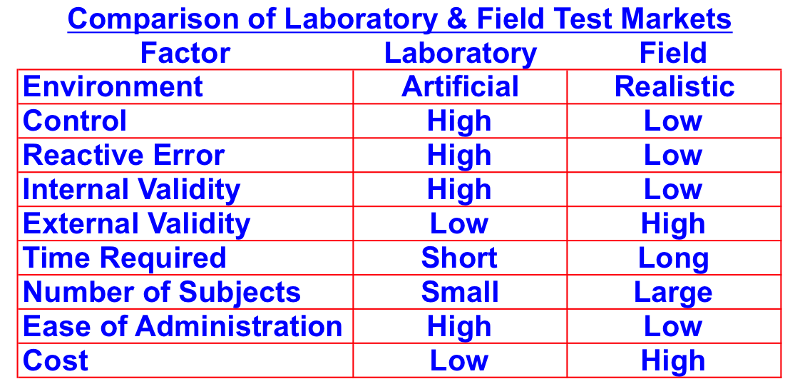Laboratory and Field Marketing Research Experiments
Marketing Research Experiments, or test markets, can be conducted in a laboratory or in the field. Lets compare laboratory tests to field tests.
The first distinction between field test and laboratory tests is the environment in which they are conducted. Field tests are conducted in the marketplace. A marketplace is a much more realistic venue to test a marketing plan than the artificial environment of a market laboratory. The big advantage of laboratory experiments is that the researchers have much more control over extraneous variables. But, laboratory tests are more prone to reactive error than field studies. Reactive errors occur when the subjects of a study (survey respondents or consumers in test markets) are affected either by the instruments of the study or the individuals conducting the study in a way that changes whatever is being measured.[i]
Internal validity is higher with laboratory tests than field tests, but external validity is lower than that of field tests. Field tests take considerably more time to complete than lab tests, they are conducted among larger samples, and they cost significantly more money. And, because of the controlled environment, laboratory tests are easier to administer than field tests.

Figure 11
[i] Paul J. Lavraka. (2008). Encyclopedia of Survey Research Methods. http://srmo.sagepub.com/view/encyclopedia-of-survey-research-methods/n448.xml
toc | return to top | previous page | next page
